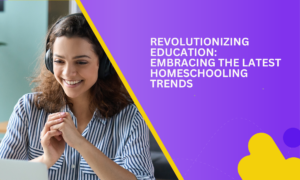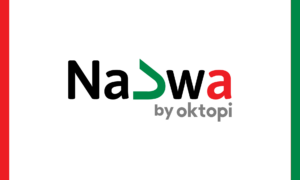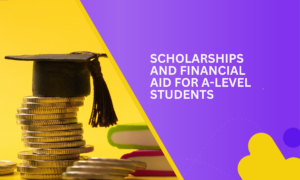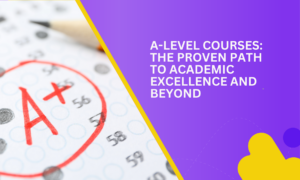In the past two years, the education sector has been subjected to many sudden changes due to the ongoing Covid-19 pandemic. The evolution and growth of technology have accompanied these changes, leading to an integration of technology into schools’ curriculums and into the learning and teaching process. With the start of 2022 comes a hope that things will soon return to normal for learners and educators. However, the educational sector has had a clear “before the pandemic” normal and an “after the pandemic” normal, and will not totally revert back to the old ways.
The establishment of a new system is already in place, and these are a few of the latest educational developments that are making their way into the year:
1- Blended/Hybrid Learning
Everyone learns differently and a lot of new learning methods are on the rise to accommodate each learner’s needs. Blended learning is one of the methods that combine traditional classroom learning with eLearning to create a certain balance between the two.
This approach places the learner at the heart of the learning process and allows them to be an actor in their own learning. The learner feels more involved, and therefore more motivated. By combining the best aspects of in-person teaching with technology-based eLearning techniques, blended learning encourages the personalization of the learning process, while also broadening the learner’s experience and reshaping the instructor’s role.
The learner has the flexibility to manage the pace at which they learn, and the place and time they want to work in, but it’s up to the instructor to choose the elements studied online and those studied in person. Blended learning shifts the instructor’s role from knowledge provider to coach and mentor. With learners working more independently, instructors can then provide face-to-face support and individualized instruction more frequently for more students, effectively improving differentiation.
The growth of technology has allowed the use of a variety of media and learning-support tools to help students receive a high-quality education through the Internet. This trend presents a number of benefits for educators and institutions who want to continue to offer their students the rigorous education they need to thrive.
Hybrid learning may have been the result of an emergency, but there are students who do well with a mixture of in-person and online lessons. Even in cases with in-person learning fully restored, hybrid learning will continue to be a preferred option for a growing number of learners. Many schools, universities, training academies, and other types of institutions now have learning environments equipped for learners who might not be able to come to class. This setup will also enable collaborating with a wider set of instructors and speakers within and beyond the city the institution or learners are located in, as instructors can work remotely without disruption.
2- Self-directed learning
Self-directed learning is an instructional strategy where the learners, with guidance from a facilitator, decide what and how they will learn. It can be done individually or with group learning, and it allows learners to take ownership of their learning process. The self-directed learning method can be applied through schools that support learning by interests and not an imposed curriculum, or through a homeschool method called unschooling in which the children can direct their own learning, at their own pace, without the rigid structures of formal education, and make their own choices through curiosity-driven experiences.
The reason self-directed learning is a growing trend is because of the many benefits it provides. It promotes self-confidence and satisfaction, exposes learners to a wider range of opportunities, gives learners the flexibility to learn when and where it works for them, but especially decide what works for them. Self-directed learning can be formal and include classes, lessons or activities chosen by the learner to improve or learn certain skills, or it can be informal and happen through regular tasks in every day’s life, like reading a book or learning something new. Learners define the learning goals they wish to accomplish, assess their needs as they progress through the learning process, collaborate with other learners, and reflect and evaluate their results. This develops a lifelong learning frame of mind, which can be an essential asset for young minds all throughout their lives.
In the professional world, training managers and HR professionals are promoting this strategy in the workplace because it facilitates the creation of a robust and sustainable learning culture for employees in their organization. It’s essential for businesses to offer compelling and varied learning opportunities now, so their people can continue adapting and preparing for what comes next, in an ever-changing world.
Learning skills is the backbone of any successful career, and the fact that employees have recognized this and are making a concerted effort to widen their own skillset is one of the few positives to be taken from the COVID-19 pandemic. It is up to businesses to ensure that employee self-directed learning is guided in the right direction – using the resources available can ensure that not only are employees learning the right skills, but they’re also learning how to prepare for the future.
3- Human skills training
Adaptability, communication, conflict resolution, creative and critical thinking, decision-making, emotional intelligence, teamwork, time management, problem-solving… these are all important and necessary skills that one is required to have when entering the workplace. Yet most people have to figure things out by themselves, as these skills are rarely taught at school or in college. A recent McKinsey study indicates that we will increasingly rely on human skills, upto 24% by 2030, only second to technology skills.
Human skills are often referred to as “soft skills”, but just as author and business coach Simon Sinek points out in his YouTube Video, there is no such thing as soft skills as there’s nothing soft about them. He also affirms that “We have to teach human skills if we want people to learn how to be better leaders. We don’t teach people how to lead. We promote people who have high performance, and we expect them to know how to lead, which is nonsense”
In an effort to prepare learners for their future careers, many educational institutions are creating trainings to help learners nurture and grow in these skill areas. Instead of waiting till the last year of high school to throw in a quick seminar, schools are also putting in place a plan to include human skills into the entire curriculum and allow students to start practicing them from an early age. Companies are also looking to retrain the existing workforce with these skills, as well as shift hiring practices to place more emphasis on human skills, not just technical know-how.
4- Personalized learning
Personalizing the learning experience can be one of the best ways to make learners feel involved and motivated by creating tailored content and the right environment for each individual to thrive. A new poll released by the Learning Assembly – a national network of organizations piloting and evaluating ed tech innovations with schools in America – shows that 93% of parents support tailoring learning to meet their child’s individual needs and the same percentage said they believe technology is a valuable tool to do just that. Many instructors also believe that the one-size fits all approach shouldn’t be the standard anymore, and that it’s time to get out of the industrial model of teaching and into one that is truly customized to meet the needs of individual students. According to a research conducted by the Education Week Research Center, half of educators describe personalized learning as an essential tool in the school improvement toolbox or as a “promising idea,” and 21% view it as a “transformational way” to improve K-12 schools.
The rise of eLearning has paved the way for personalized learning methods to challenge the idea of standardized curricula and tests and encourage the fact that a learner can only thrive in the environment that is best for them.
And as more computer-based activities become available, this has provided educators more data about their learners’ progress, enabling them to see which ones are keeping up, which ones are falling behind and which ones are maybe ahead. The need of an LMS that includes AI-powered analytics like oktopi addresses the increased demand for personalized learning at speed and scale, and as this demand grows more AI-powered edtech solutions will become available on the market to enable educators to adapt courses according to the learner’s needs.
5- Bite-sized learning
Bite-sized learning, also known as micro-learning or fast-learning, is a learning method favoring very short modules of 1 to 15 minutes, available at any time, each of them being centered on a precise notion. Its concept is to break down information into small, manageable chunks instead of subjecting learners to long, uninterrupted sessions.
These micro-learning modules respond to the acronym ATAWAD (anytime, anywhere, any device) and are compared to “nuggets” of knowledge, as the content can be “consumed” at any time of the day (between two appointments, during a break, on public transportation…) just like when we’re hungry.
The length of the module is not its only important factor: the structure of the module is simple and focuses on one learning objective at a time, giving out only the essentials. If the learner is interested in developing certain points, they can then revisit certain topics and make their own connections between modules, instead of being presented with long, complex lectures in which the instructor makes the connections for them. Introducing bite-sized learning early in a student’s life will let them know that learning is a continuous process that does not stop after school is over, but may take a different form.
In the professional world, many companies are now integrating bite-sized learning modules into their training strategy to allow their employees to learn new skills while also being autonomous. It is an economically sound strategy for companies as it reduces the need for long days dedicated exclusively to instructing new employees or updating the skills of the current workforce.
With the rise of social media, information can be found everywhere: whether it’s a podcast, a blog, an Instagram reel, or a TikTok, subject matter experts are becoming content creators and disseminating their knowledge in bite-sized content. Math tips, plumbing techniques, or cooking methods are all packages of information available to everyone, in short, seconds-long videos. This trend might soon spill into educational courses as well, as more and more instructors are integrating bite-sized content into their classes.













